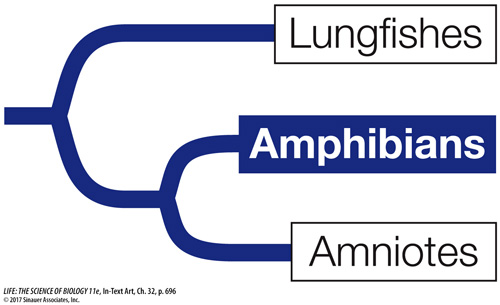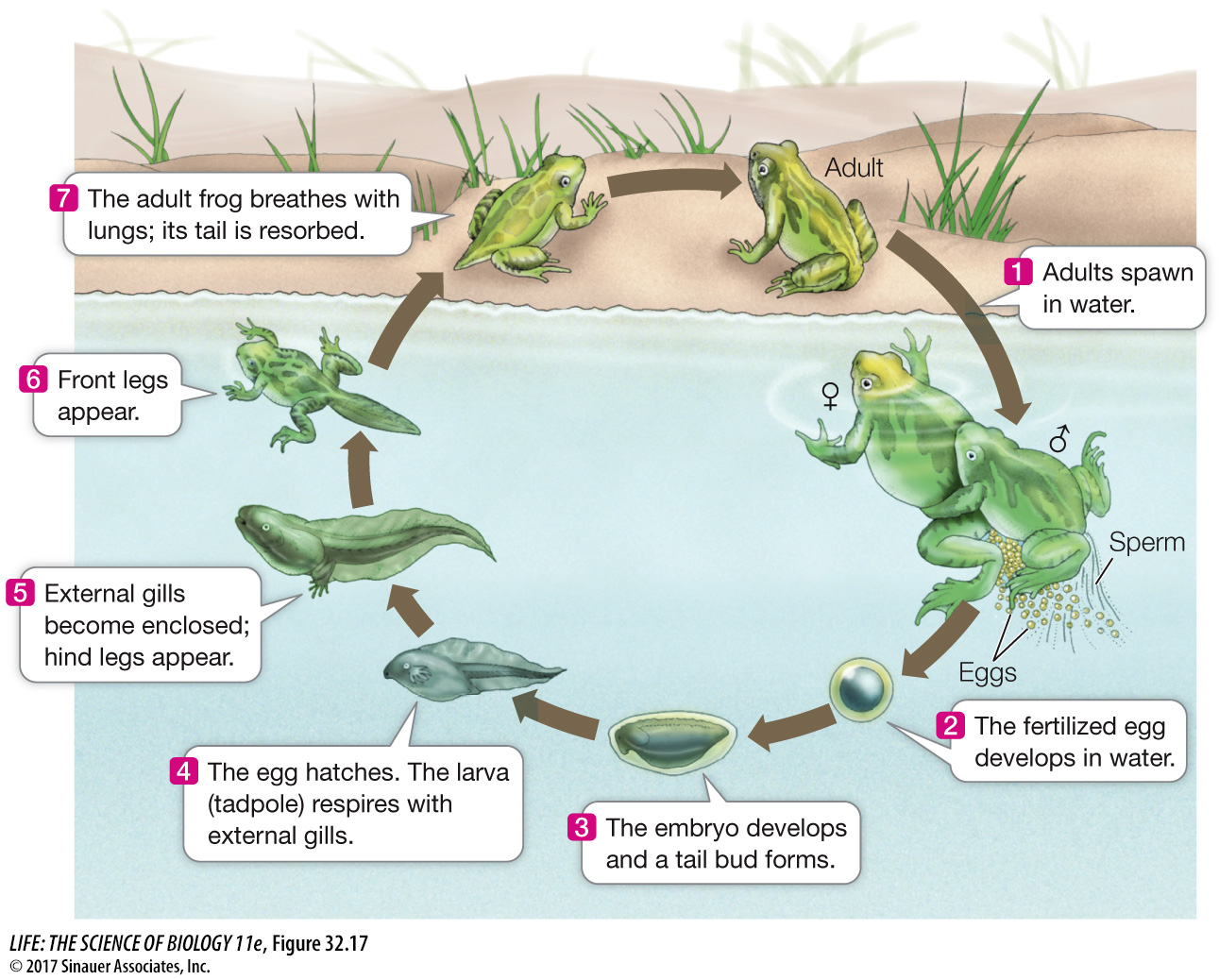Amphibians usually require moist environments

Most modern amphibians are confined to moist environments because they lose water rapidly through the skin when exposed to dry air. In addition, their eggs are enclosed within delicate gelatinous envelopes that cannot prevent water loss in dry conditions. In some amphibian species, adults live mostly on land but return to fresh water to lay and fertilize their eggs (Figure 32.17). The fertilized eggs give rise to larvae that live in water until they undergo metamorphosis to become terrestrial adults. However, many amphibians (especially those in tropical and subtropical areas) have evolved a wide variety of additional reproductive modes and types of parental care. Internal fertilization, for example, evolved several times among amphibian species. Many species develop directly into adultlike forms from fertilized eggs laid on land or carried by the parents. Other species of amphibians are entirely aquatic, never leaving the water at any stage of their lives, and many of these species retain a larval-

Q: What is a potential advantage of maintaining an aquatic tadpole stage, even though the adults are terrestrial?
Most adult frogs are insectivorous, but insects can be very limited during early spring or the beginning of wet seasons. By reproducing in the water, frogs can take advantage of an abundant seasonal resource (algal blooms in temporary water) as a food source for their offspring. This allows the developing tadpoles to specialize on an abundant resource until they are large enough to feed on insects.
Animation 32.2 Life Cycle of a Frog
The more than 7,000 known species of amphibians living today belong to three major groups: the wormlike, limbless, tropical, burrowing, or aquatic caecilians (Figure 32.18A), the tailless frogs and toads (collectively called anurans) (Figure 32.18B), and the tailed salamanders (Figure 32.18C and D).

Anurans are most diverse in wet tropical and warm temperate regions, although a few are found at very high latitudes. There are far more anurans than any other amphibians, with well over 6,000 described species and more being discovered every year. Some anurans have tough skins and other adaptations that enable them to live for long periods in deserts, whereas others live in moist terrestrial and arboreal environments. Some species are completely aquatic as adults. All anurans have a short vertebral column and a pelvic region that is modified for leaping, hopping, or propelling the body through water by kicking the hind legs.
The more than 600 described species of salamanders are most diverse in temperate regions of the Northern Hemisphere and in cool, moist environments in the mountains of Central America, although a few species penetrate into tropical regions. Many salamanders live in rotting logs or moist soil. One major group has lost the lungs, and these species exchange gases entirely through the skin and mouth lining—
Many amphibians have complex social behaviors. Most male anurans utter loud, species-
Media Clip 32.4 Answering a Mating Call
Amphibians are the focus of much attention today because populations of many species are declining rapidly, especially in mountainous regions of western North America, Central and South America, and northeastern Australia. Worldwide, about one-
*connect the concepts One of the major factors associated with amphibian declines is the global spread of a pathogenic chytrid fungus, as explored in Key Concept 29.2 and Figure 29.6.